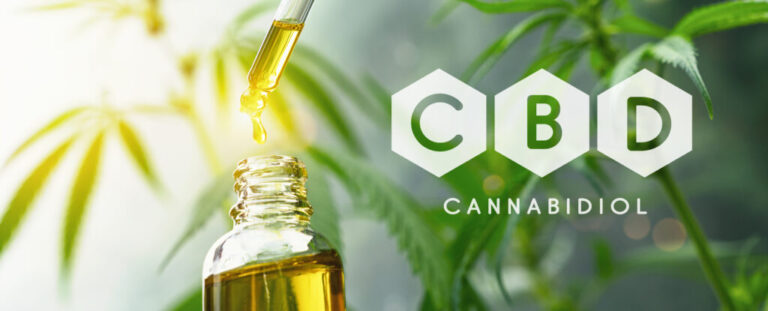
[ad_1]
The global cannabidiol market (CBD) is set to undergo a dramatic expansion, with projections estimating the market value will grow from USD 8.12 billion in 2024 to USD 23.41 billion by 2031. This represents a compound annual growth rate (CAGR) of 16.3% over the forecast period. The rise in demand for CBD products, coupled with increasing legalization worldwide, and the growing acceptance of CBD in both the health and wellness sectors, are the primary drivers of this growth.
Why the Cannabidiol Market Will Surge 16.3% by 2031 – Market Drivers and Dynamics
The global Cannabidiol market is witnessing growth across multiple fronts, with several factors playing a crucial role:
Legalization and Regulatory Evolution
Legalization in North America, Europe, and parts of Asia-Pacific has provided the foundation for CBD’s widespread adoption. The 2018 U.S. Farm Bill, which legalized hemp-derived CBD with less than 0.3% THC, has accelerated market growth in North America, accounting for a 40.2% market share in 2024. Europe is expected to follow suit as more countries, including Germany and the UK, adjust their regulations around medical CBD, contributing to rapid market expansion.
In Asia-Pacific, countries like China, Japan, and India are showing interest in hemp-derived CBD, contributing to the region’s position as the fastest-growing market. The increasing recognition of CBD’s health benefits has led to expanding domestic production and a regulatory shift toward greater acceptance.
Increasing Demand for Natural Health and Wellness Products
The rising trend toward natural, plant-based health solutions is a major driver of CBD demand. Consumers are increasingly seeking alternatives to traditional pharmaceuticals for managing conditions like chronic pain, anxiety, and sleep disorders. CBD products are perceived as safer, non-addictive options compared to opioids and benzodiazepines, which has contributed to their growing popularity.
CBD is also being adopted in the sports and fitness sectors, with athletes and active individuals using it for its anti-inflammatory and pain-relieving properties. This crossover into wellness and fitness markets is expected to fuel continued growth, particularly for CBD oils, topicals, and edibles.
Medical and Therapeutic Applications
CBD’s use in medical treatments is a key segment driving growth. The pharmaceutical industry is increasingly incorporating CBD into medications, with FDA-approved products like Epidiolex used to treat epilepsy. CBD’s role in treating conditions like schizophrenia, multiple sclerosis, chronic pain, and even cancer symptoms has opened up significant opportunities for expansion in the medical cannabis market.
Research continues to explore CBD’s potential in treating opioid addiction, neurological disorders, and mental health conditions, making the medical sector one of the most promising growth avenues.
Market Segmentation: Product and Application Insights
The cannabidiol market is diverse, with products catering to a wide range of consumer needs. The market can be segmented by product type, application, and region:
By Product Type
- CBD Oil: Accounting for the largest market share, CBD oil is favored for its bioavailability and versatility. It can be administered sublingually, added to food and drinks, or used topically.
- Topicals: CBD topicals, such as creams and balms, are gaining popularity for their effectiveness in treating localized pain, skin conditions, and inflammation.
- Edibles and Beverages: The growing popularity of CBD-infused food and drinks is particularly strong in North America and Europe. This segment appeals to a broader consumer base looking for convenient and discreet consumption methods.
By Application
- Medical Use: Medical CBD applications, particularly in managing chronic pain, neurological disorders, and epilepsy, are a major growth driver. This segment is expected to continue expanding as research confirms more therapeutic benefits.
- Wellness and Personal Use: The wellness market has seen significant growth, with consumers using CBD for stress relief, sleep improvement, and general well-being. CBD-infused skincare and beauty products are also becoming increasingly popular.
Regional Insights: Market Growth Across Continents
North America
The North American market dominates the global CBD landscape, driven by favorable regulations and strong consumer demand. The U.S. remains the largest market, with major players like CV Sciences and Charlotte’s Web leading the industry. Canada has also seen significant growth due to nationwide legalization of cannabis.
2. Europe
Europe is projected to witness steady growth as countries such as Germany, the UK, and France develop more favorable regulatory frameworks. Increased demand for CBD in pharmaceuticals and wellness products will fuel market growth.
Asia-Pacific
The Asia-Pacific region is set to emerge as the fastest-growing market due to its vast population and increasing demand for hemp-derived CBD products. China and Japan, in particular, are investing in domestic hemp production, positioning themselves as key players in the CBD supply chain.

Challenges and Opportunities in the Cannabidiol Market
Despite the promising growth trajectory, the cannabidiol market faces several challenges:
1. Regulatory Uncertainty
The lack of uniform global regulations creates barriers to entry for manufacturers and complicates international trade. In countries where cannabis remains illegal or heavily regulated, businesses face hurdles in scaling operations and distributing products across borders.
2. Quality and Safety Concerns
As demand for CBD products grows, ensuring product quality and safety becomes increasingly important. The rise of counterfeit and contaminated products in unregulated markets can undermine consumer trust, emphasizing the need for clear regulations and third-party testing.
3. Product Innovation and Differentiation
With intense competition in the market, companies are focusing on product innovation to stand out. Developing new forms of CBD delivery, such as CBD inhalers, transdermal patches, and suppositories, will create opportunities for differentiation and attract niche markets.
Conclusion
The global CBD market is set for extraordinary growth through 2031, driven by expanding legalization, increasing consumer interest in natural health products, and advancements in medical applications. With a projected CAGR of 16.3%, the market presents significant opportunities for businesses and investors. However, companies must navigate regulatory complexities and ensure product quality to achieve long-term success.
Related
[ad_2]
Source link